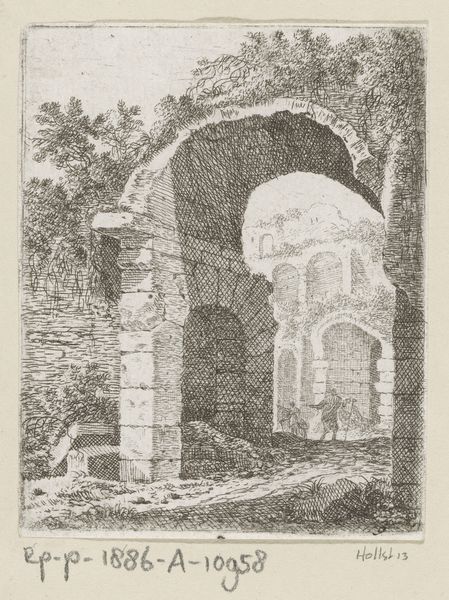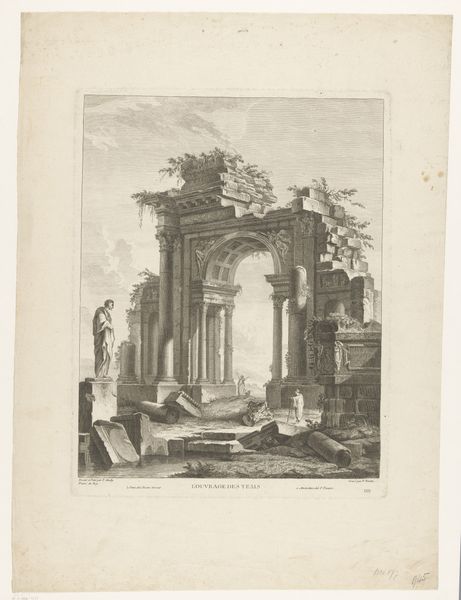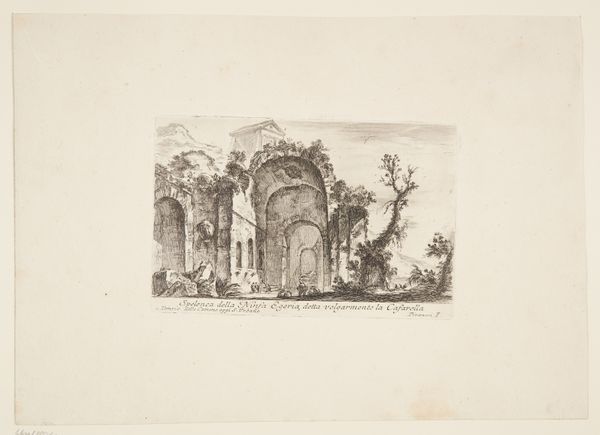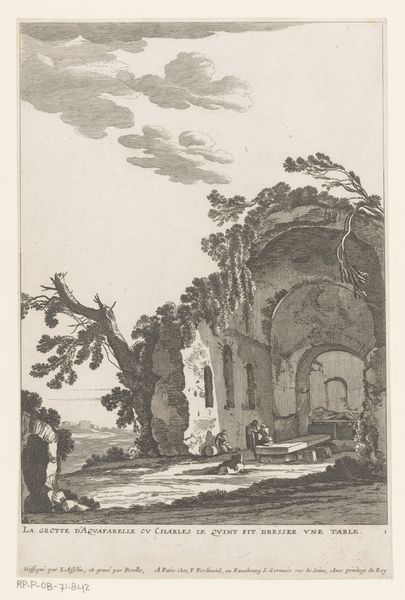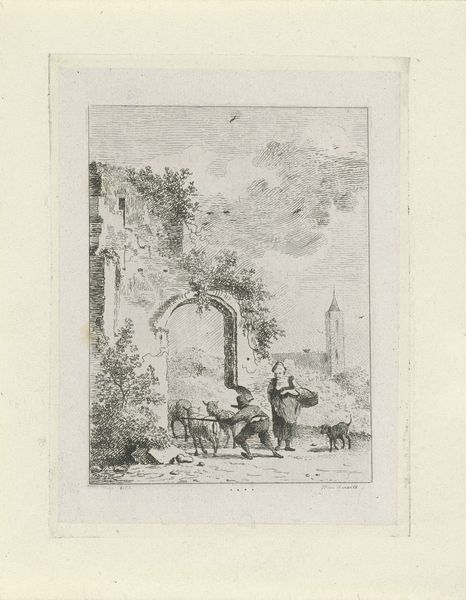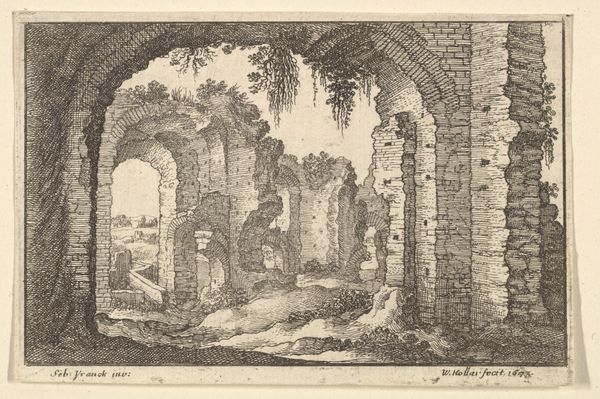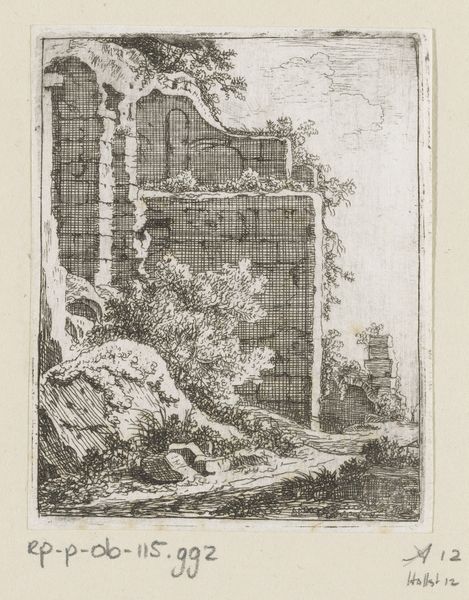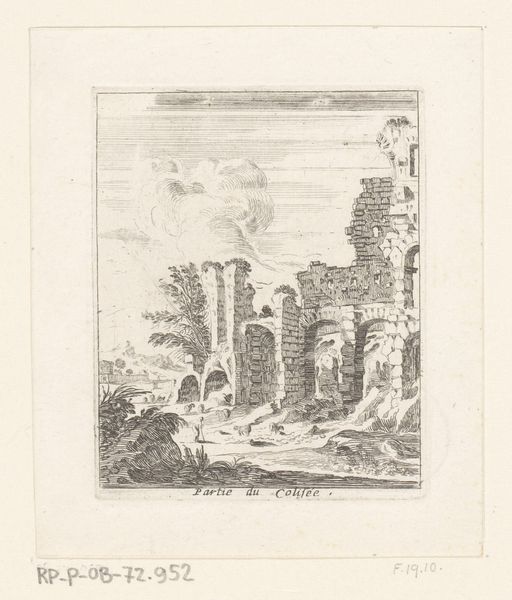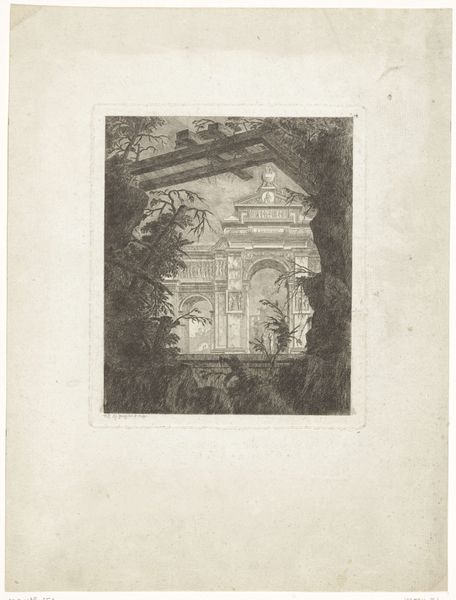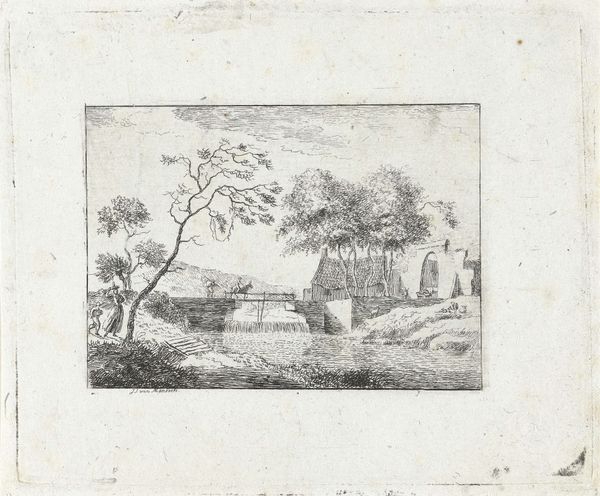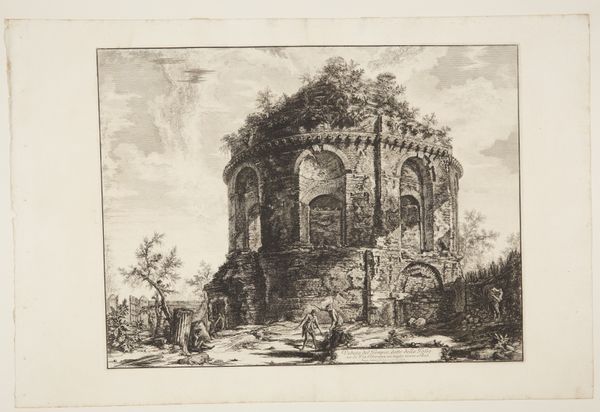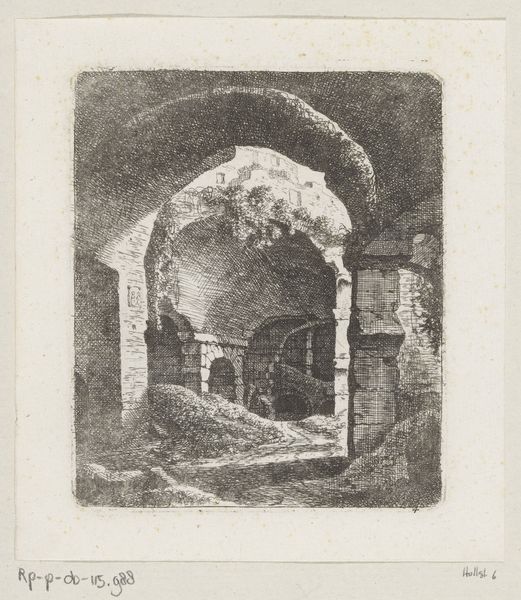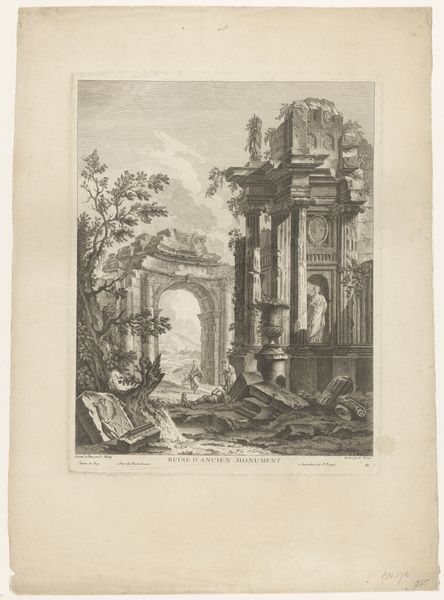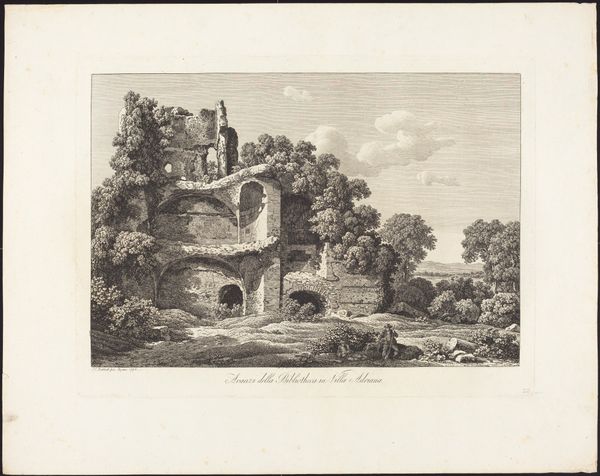
print, engraving, architecture
#
baroque
# print
#
landscape
#
line
#
engraving
#
architecture
Dimensions: height 119 mm, width 103 mm
Copyright: Rijks Museum: Open Domain
Editor: Here we have Johann Franz Ermels’ “Ruïne van een portico met twee mannen”, an engraving likely created between 1651 and 1693. The lines create a rather somber, almost ghostly atmosphere around the architectural ruins. What do you see in this piece? Curator: I am immediately struck by the tension created through the artist's manipulation of line and form. Note how the density of the etched lines describes the heavy, crumbling texture of the stone. This is contrasted by the relative lightness of the sky. Ermels’ considered arrangement of contrasting light and dark tonalities structures the overall composition, drawing the viewer’s eye deeper into the ruin itself. Observe how your attention moves toward that distant archway through the strategic use of hatching and cross-hatching. How does that linear perspective affect your reading of the ruin? Editor: It makes it feel immense, but also highlights the figures, giving scale. It looks like time is constantly bearing down. The texture feels very tactile, though. Curator: Precisely. The emphasis on texture, achieved through purely formal means, is a key element here. Ermels exploits the possibilities inherent within the engraving process, almost inviting us to trace the lines with our fingers. This effect creates a dialogue between the permanence of architecture and the ephemerality of the artist’s line. Editor: I see what you mean, the contrasting densities of the line give shape to a story about something solid dissolving. Thanks for pointing that out. Curator: Indeed. Formal analysis permits us entry into deeper contemplation of what may have only felt intuitively recognizable.
Comments
No comments
Be the first to comment and join the conversation on the ultimate creative platform.
